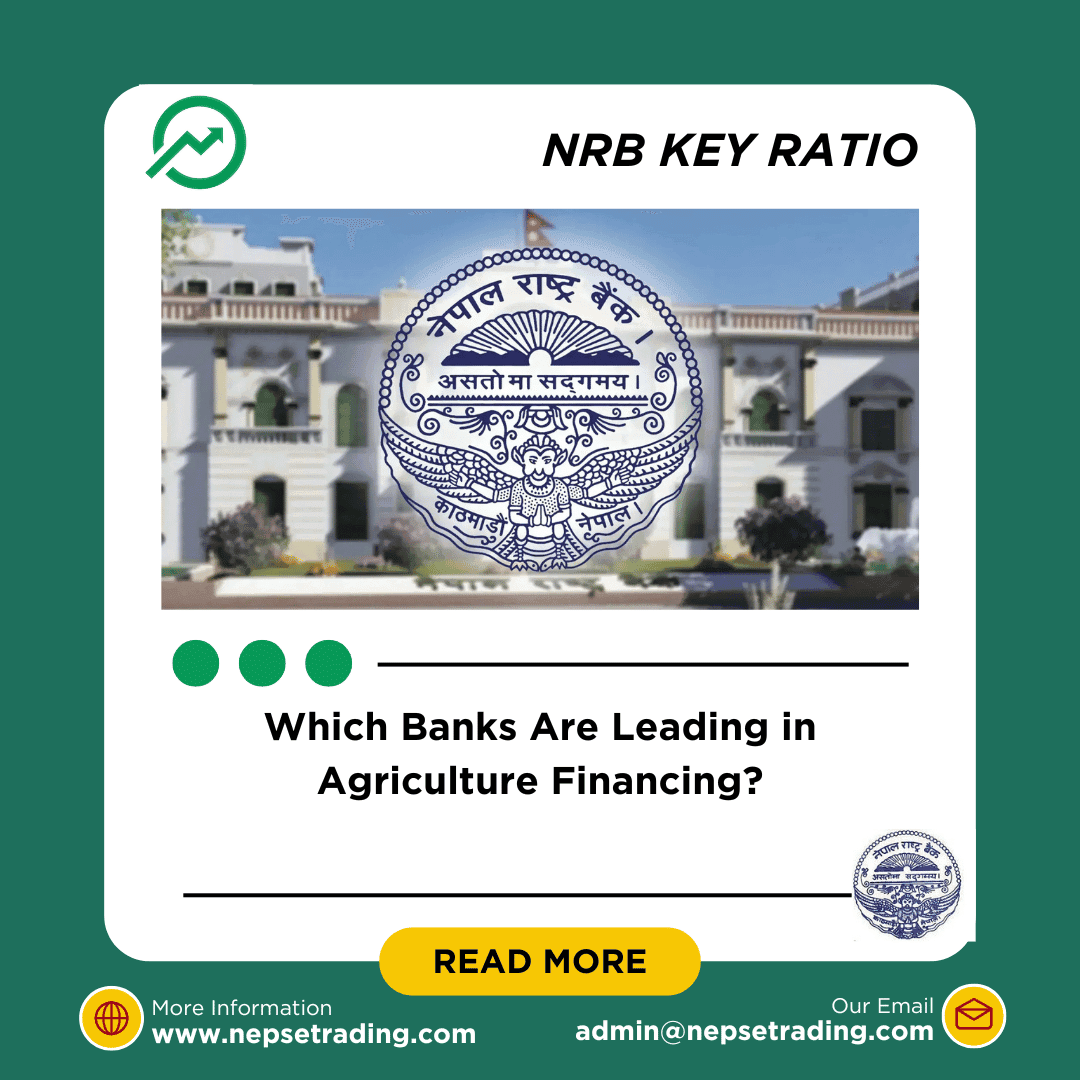By Sandeep Chaudhary
Which Banks Are Leading in Agriculture Financing?

Based on NRB’s Key Financial Indicators (Asadh end, 2082 / Mid-July 2025), the banks most aggressively meeting and surpassing the mandatory 11% agriculture lending requirement stand out as leaders in financing Nepal’s farming sector. At the top, the Agriculture Development Bank (ADBL) dominates with a remarkable 28.55% of its total loan portfolio in agriculture, far exceeding the minimum threshold. This aligns with its historic mandate to support rural farmers and agro-based enterprises. Among private banks, Prabhu Bank (14.07%), NIC Asia (11.51%), and Global IME (12.14%) are notable performers, each channeling double-digit percentages into agriculture. Similarly, NMB Bank (12.04%), Citizens Bank (11.77%), and Prime Bank (11.80%) also fulfill their regulatory obligations while actively supporting rural economies.
On the weaker side, traditional giants like Nepal Bank (0.79%), RBB (0.88%), and Standard Chartered (0.29%) are far below the mandated target, reflecting their historical tilt toward corporate, urban, and trade financing rather than rural sectors. This gap highlights the structural divide: development-focused banks and aggressive private players are pushing resources into agriculture, while older institutions and foreign-backed banks remain conservative in this space.
For the broader economy, higher agricultural lending means improved access to credit for farmers, rural entrepreneurs, and cooperatives, supporting Nepal’s food security and rural employment. For investors and policymakers, it also signals which banks are strategically aligned with NRB’s “priority sector lending” framework, balancing profitability with national development goals.









